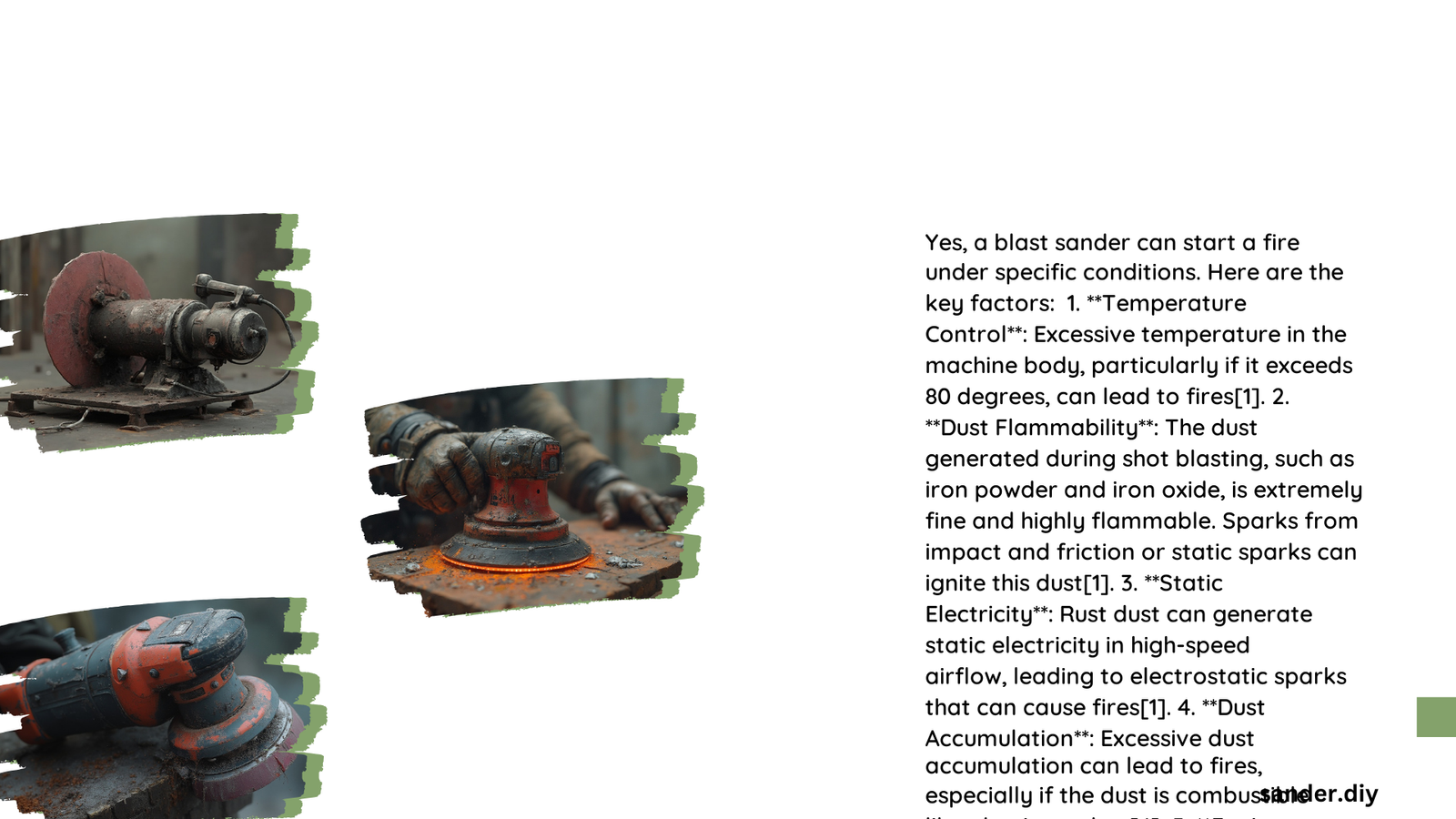Blast sanders pose a significant fire risk in industrial environments due to their potential for generating sparks, static electricity, and heat during abrasive blasting operations. The combination of high-velocity abrasive materials, metallic surfaces, and surrounding flammable substances creates a perfect storm for potential fire incidents. Understanding these risks and implementing comprehensive safety protocols is crucial for preventing workplace fires and protecting personnel and equipment.
What Makes a Blast Sander a Fire Hazard?
How Do Sparks Generate During Blasting?
Blast sanders create sparks through multiple mechanisms:
- High-Speed Abrasive Projection: Rapid movement of abrasive materials against surfaces
- Metal-on-Metal Contact: Friction between metallic surfaces generates intense heat
- Static Electricity Buildup: Electrical charges accumulate during blasting process
What Conditions Increase Fire Risk?
| Risk Factor | Potential Consequences | Mitigation Strategy |
|---|---|---|
| Flammable Materials Nearby | Immediate Ignition | Clear work area |
| Confined Spaces | Concentrated Spark Accumulation | Proper Ventilation |
| Dry Environmental Conditions | Enhanced Static Electricity | Humidity Control |
Can Static Electricity Cause Fires?
Static electricity represents a critical fire risk during blast sander operations. The dry, high-friction environment creates electrical charges that can:
- Generate unexpected sparks
- Accumulate on equipment surfaces
- Potentially ignite surrounding flammable materials
What Preventive Measures Reduce Fire Risks?

How to Implement Safety Protocols?
Comprehensive safety strategies include:
- Engineering Controls:
- Install wet abrasive blasting systems
- Implement robust grounding mechanisms
-
Use dust suppression technologies
-
Administrative Controls:
- Conduct thorough risk assessments
- Establish restricted work zones
- Develop comprehensive training programs
What Personal Protective Equipment Is Recommended?
Essential PPE for blast sander operations:
- Flame-resistant clothing
- Electrical insulation gloves
- Safety glasses with side shields
- Respiratory protection
- Hearing protection
What Are the Most Critical Safety Considerations?
How to Minimize Ignition Potential?
Key strategies include:
- Select low-spark generating abrasive media
- Maintain equipment regularly
- Monitor environmental conditions
- Implement strict housekeeping protocols
- Use explosion-proof electrical equipment
What Training Should Workers Receive?
Comprehensive training must cover:
- Fire prevention techniques
- Emergency response procedures
- Equipment maintenance
- Hazard identification
- Proper use of safety equipment
Conclusion
While blast sanders can potentially start fires, implementing rigorous safety protocols significantly reduces risks. Proactive management, continuous training, and advanced technological solutions are essential for maintaining a safe working environment.
Key Takeaways
- Blast sanders generate multiple fire risks
- Static electricity is a primary concern
- Comprehensive safety measures are crucial
- Regular training prevents potential incidents
Reference:
– OSHA Abrasive Blasting Safety Guidelines
– National Fire Protection Association Resources
– Industrial Safety and Hazard Mitigation Strategies
